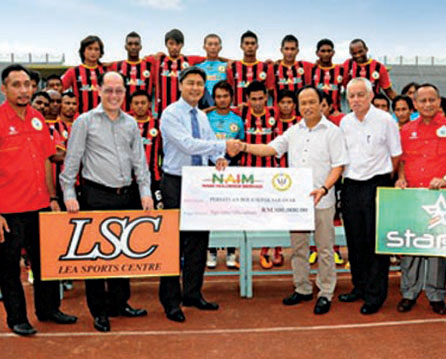Corporations near and far believe that giving back to the community is an important portion of a company’s responsibility as it does business.
Aside from achieving KPIs, generating profits and delivering dividends, companies believe it is utmost important to engage with the local community and provide assistance when needed.
Presenting one such case study: Naim
Naim believes that building a strong business and creating a better world are essential ingredients for long-term success. As such, it endeavours to integrate its role as a corporate citizen with its day-to-day business.
Some of Naim’s key performance indicators (KPIs) in relation to CSR are social, community and environment conservation investment, employee volunteerism and health and safety.
In fact, in recognition of the group’s efforts in CSR, Naim was granted the winner of the Asia Responsible Entrepreneurship Awards in the Social Empowerment category in 2014.
According to Christina Wong, Naim’s deputy managing director, there are two critical factors in ensuring sustainable CSR efforts which are leadership and formulation of the ‘CSR Culture’ among the workforce through communication.
In terms of leadership, Wong said that there are a few statements which the group believes would need to be present to facilitate sustainable CSR such as the fact that leaders need to believe that building a better world is crucial to organisational success, now and in the future.
She added that leaders should also possess a focused commitment to long-term strategic thinking, planning and action in relation to CSR.
“Leaders with such long-term vision would need to have the ability to communicate this vision, so that they can influence others to adopt this vision,” Wong said.
Furthermore, Naim believes that leaders not only provide the vision – they, together with their organisations, should engage in sustainability efforts that focus on communities and environmental conservation programmes.
“In other words, the leaders and their leadership styles must demonstrate that they model the ‘CSR sustainability’ culture, both professionally and personally – they need to lead by example,” she said.
Once the above are present, Wong said that the next layer would involve communicating or cascading this to the rest of the workforce – the objective here is to inculcate a ‘CSR Culture’ among staff.
This, she noted, can be done via on-boarding or new staff orientation programmes, standard operation procedures in relation to formulation and implementation of CSR efforts, creation of CSR-related KPIs and formulation of yearly CSR plan (the activities of which would be available for staff participation).
“It can also be done through the creation of CSR Committee within the organisation to propose and oversee the implementation of such activities, regular emphasis on the importance and role of CSR in scheduled sessions such as town hall meetings, training days and management sharing sessions and lastly, recognition accorded to staff demonstrating good practices such as high level of volunteerism, promoting health and safety at work.”
In a potential scenario in which times get harder and the economy is a bit tigher, Naim believes that companies should not abandon CSR altogether or charitable initiatives until times become better.
“What we are saying is that CSR needs to adapt to the circumstances, and leaders need to pin down CSR’s place among the organisation’s priorities during bad times,” Wong said.
For instance, Naim noted that CSR can come in many forms, be it contributions in cash or in kind to charities or the deserving, community involvement such as internship opportunities for students, environmental clean-ups or even training opportunities for communities in specific areas and even integrating CSR into products and services such as incorporating ‘green’ elements into them.
When times are good, the group believes that organisations normally would embark on all of the above, but when times are bad, organisations need to decide which CSR strategy they would like to pursue – maybe instead of contributing financially to a range of charities, think about contributing to a few selected ones, or encouraging staff to be more involved in community-related activities.
“There are two tough realities here – firstly, even during challenging times, CSR belongs in every company, and secondly, organisations need to make money and survive first, before they can contribute towards CSR, be it financially or in kind.
“So, we feel that CSR is here and here to stay,” Wong said.
Overall, in this day and age, Naim noted that businesses are required to pay attention on aspects of business which are beyond their financial results ie CSR.
“Increased globalisation and usage of information technology, and future generations whom are more educated, aware and informed will undoubtedly require businesses to accord more focus towards CSR- call it an evolution if you must.
“Our group will increase its efforts in implementing sustainable initiatives, providing equal focus on community-related initiatives and environment conservation ones,” Wong said.
One of the aspects Naim is looking into is ways to enhance the integration of ‘green’ elements into its products, something which the group is very excited about.
This case study was taken from here.

